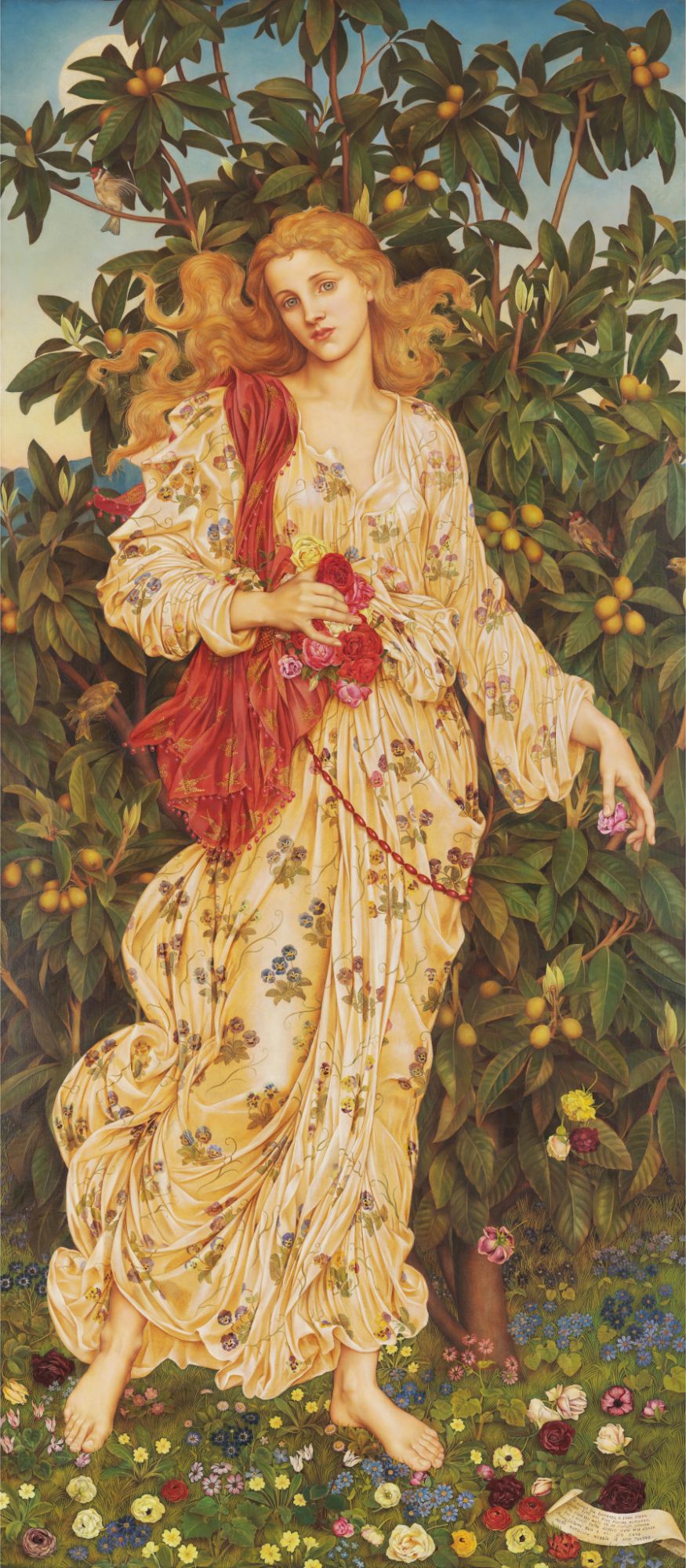
Flora (1894) by Evelyn De Morgan
De Morgan clearly drew inspiration from Botticelli’s art, most strikingly in the goddess’ pose and Italianate dress. Portrayed full-length Flora’s long limbs fill the canvas, the contrapposto (art historical term used to describe a human figure standing with most of its weight on one foot) emphasising the elegance and weightlessness of her body.
Wide-eyed and full-lipped, Flora gazes out at us with a serenely enigmatic expression. Her tilted head and the way in which her golden locks are caught up by the breeze are reminiscent of another of Botticelli’s works, The Birth of Venus. Evelyn made studies of both masterpieces in the Uffizi gallery on visits to Florence, where she completed Flora.
From 28 April to the 3 May in Ancient Rome, the festival of Floralia was held in tribute to Flora, the goddess of flowers, vegetation and fertility. Games were played, performances were staged, and animal sacrifices were made to honour the important female deity. Those attending the festivities wore multi-coloured garments as they danced, ate and drank during their way through the six-day long celebration. Nowadays, the beginning of Spring is marked on the 1 May by May Day, when we hold public fêtes comprised of activities such as parades, fairground games and May Pole dancing. This year things will be very different but, with the power of technology, art can help us to notice and feel gratitude for the arrival of this rejuvenating season.
Evelyn de Morgan painted Flora in 1894, in keeping with traditional representations of the goddess from antiquity which had been revivified during the Renaissance by the great Florentine painter Sandro Botticelli (c. 1445-1510) in La Primavera.
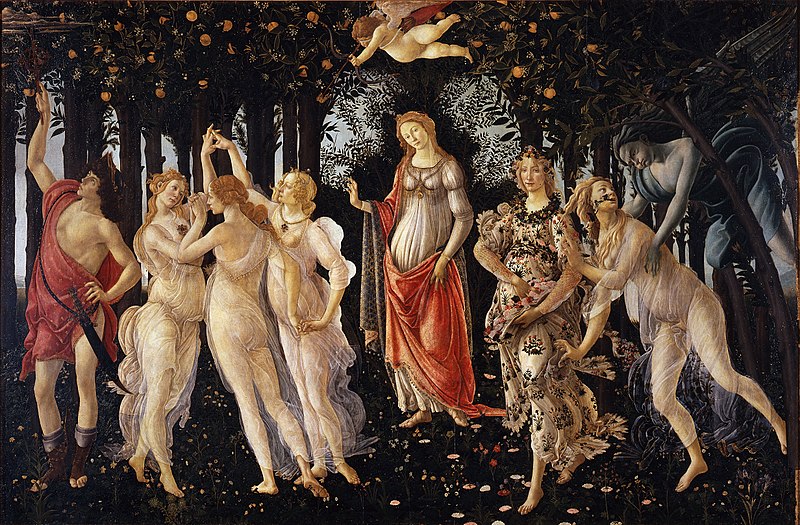
La Primavera (c.1480s) by Sandro Botticelli, tempera on wood, Uffizi Gallery https://commons.wikimedia.org/w/index.php?curid=7963136
De Morgan’s personification of Spring is a beautiful, fresh-faced young woman. The model for Flora was Jane Hales, nursemaid to Evelyn’s younger sister, who features in many works by the artist.


The Birth of Venus (c.1486) by Sandro Botticelli, tempera on canvas, Uffizi Gallery https://commons.wikimedia.org/w/index.php?curid=22507491
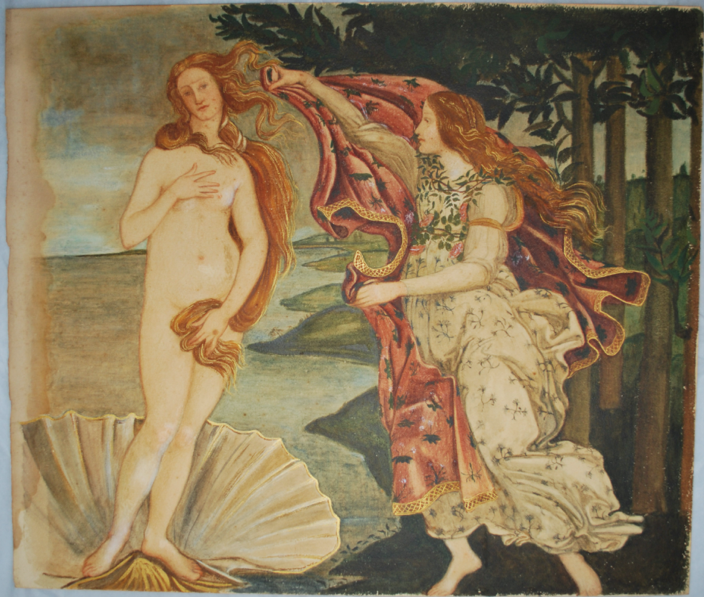
Study after Botticelli’s The Birth of Venus by Evelyn De Morgan, drawing and watercolour on paper, The De Morgan Foundation
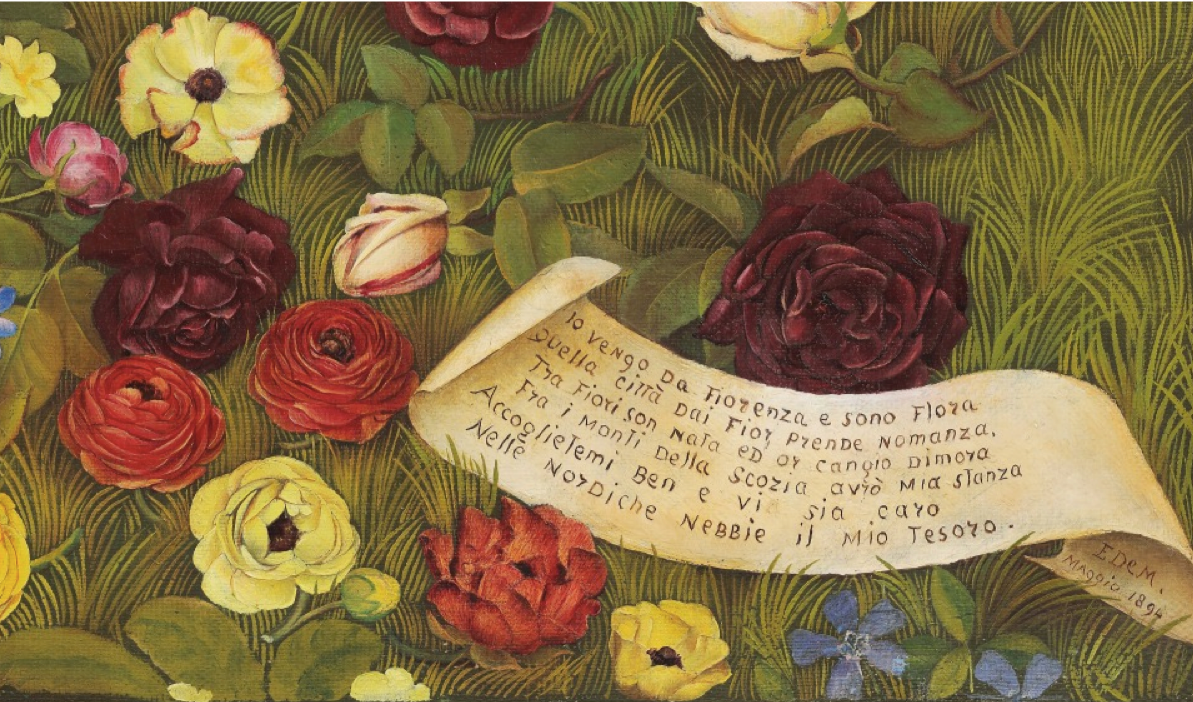
In recognition of where this painting was created (the city after whom Florence was named) and its Scottish patron, William Imrie, De Morgan includes a scroll in the bottom right-hand corner.
Translated from Italian it reads:
I come down from Florence and am Flora.
This city takes its name from flower
Among the flowers I was born and now by a change of home
I have my dwelling among the mountains of Scotia
Welcome, and let me treasure amid northern mists be dear to you.
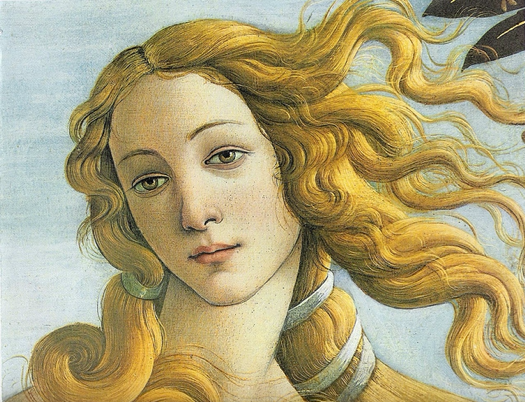
Detail of The Birth of Venus (c.1486) by Sandro Botticelli

Detail of Flora by Evelyn De Morgan
Flora’s light floral dress conveys motion as it swirls and winds around her body. The glossy fabric is covered with pansies, which Evelyn innovatively painted by applying colour over gold leaf to make them shimmer (she also used this technique in parts of the hair). A bright red shawl is slung over her shoulder and a string of red beads drape below her hip.
Clasping blossoms in her right hand, she scatters them on the grass with her left. Flowers have always held symbolic meaning in Western art, but floriography had become widely popularised in Victorian England by the publication of books that explained their secret meaning, notably The Language of Flowers by Kate Greenaway (1884). Because of the accuracy with which De Morgan has depicted the various flora, we can identify specific plants and unlock their significance in this painting. For example, there are pink and red roses (for joy and love), forget-me-nots (memory), primroses (youth), cyclamen (diffidence) and ranunculus (charm). The trees behind Flora bear ripe loquat fruit, a golden plum-like apricot, which Evelyn may have seen growing in Italy.
The birds that sit in the boughs are also meaningful. In Christian art, the goldfinch represents Christ’s redemption, but their inclusion here can be read as a sign of optimism and hope. Historically, goldfinches were popular as pets, yet those we see here are conspicuously free. Flora’s stole is emblazoned with swallows (see Jane Hales’ brooch in the photograph above), a bird that migrates for the coming of Spring.
On the horizon we can see a golden light that could be taken for a sunrise – however, we also see a white disc-like sun already risen in the sky. Evelyn’s paintings often play with the passage of time, and it seems fitting to do so here when considering the transitory nature of the seasons.
Flora epitomises the sensations of Spring, a season which brings light, warmth and growth. For millennia humankind has celebrated the renewal of nature and the positivity it brings. And yet this year – when it is arguably needed more than ever – we are at risk of missing it completely.
This painting can inspire us to observe and appreciate nature from the safety of our homes and gardens by taking the time to feel of the warmth of the sun or refreshing breeze, to listen to birdsong and be thankful for the inherent beauty in the smallest of flowers.
By Amy Plewis, De Morgan Volunteer





